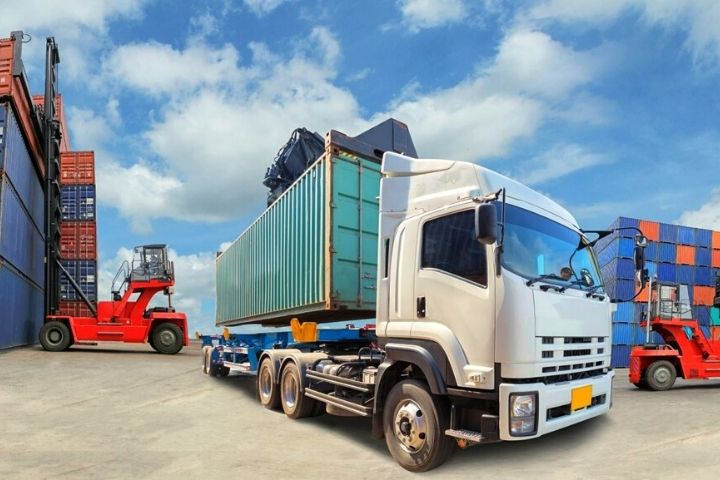Top 4 Challenges Logistics Will Face In The Future

There’s a reason why the logistics and transportation industry is worth a staggering $1.8 trillion. These days we rely on this industry to bring us everything from groceries to furniture.
It’s hard to remember a time when we didn’t have access to almost instantaneous delivery. Sadly, the logistics industry is feeling the weight of these growing pains these days.
Challenges within the industry are resulting in delayed shipments and angry customers. So, what are the logistics challenges? And what are the solutions to them?
If you want to learn the answer to these questions, and more, then you’re in the right place. In this article, we’ll teach you everything you need to know about the challenges that the logistics industry is currently facing. Let’s get started!
Table of Contents
Disruptions In The Supply Chain
We’ve likely all heard about supply chain disruptions in the news. This became extremely evident at the start of the COVID-19 pandemic.
Huge demand for household essentials like flour, dried goods, and toilet paper meant that many grocery stores were completely out of stock. Sadly, most supply chains were ill-equipped to handle this type of disruption.
As such, stores were out of these products for weeks. Today, supply chain disruptions can be felt around Christmas time as delivery companies struggle to keep up with the millions of orders coming in.
It doesn’t help that certain supply chains are getting longer. For example, the automobile industry needs to import multiple parts from China and other countries. And, the longer a supply chain is, the bigger the risk of disruption.
On-Time Delivery Problems
These days, consumers expect online orders to be both cheaper and quicker. This is thanks, in large part, to Amazon Prime. This delivery behemoth has made deliveries that take a few days the norm.
As a result, other companies are trying to step up their delivery times to keep up with this giant. This, in turn, is placing a strain on eCommerce small businesses that can’t afford to keep up with these rising costs.
Logistic companies now need to worry about how to minimize transportation time, all while being more environmentally friendly. At times, it can seem like an impossible task to juggle.
Climate Change Crisis
There are a variety of reasons why the climate change crisis is affecting logistics industries. For one thing, the increased heat is leading to wildfires and increased storms.
As we’ve seen on the news, these types of climate-related destruction can devastate communities. Not only that, but they also disrupt supply chains.
It’s next to impossible to bring goods into an area when the roads have been destroyed or the forest is on fire. Next, there are the legislation challenges. Some states have already adopted stricter laws to reduce the amount of unnecessary transportation.
If logistic companies put off these changes, then they could be caught unprepared when the laws inevitably get passed. As such, it’s smarter to start preparing for them now.
Rising Transportation Costs
These days we rely on trains, trucks, ships, and planes to support the massive logistics network that is responsible for shipments. Unfortunately, all of these things use non-renewable fuel resources.
The environmental impact of these fuels is one of the problems associated with them. However, for many logistic companies, the bigger issue is the fuel costs. Anyone who drives often knows that fuel costs fluctuate almost every week.
Sadly, these fluctuations are completely out of the control of the logistic companies. However, that doesn’t mean that creative solutions can’t fix this problem and all the other ones on this list. In the next section, we’ll dive into some of these solutions.
How Do We Face These Logistics Challenges?
We know that these challenges facing the logistics industry can seem pretty insurmountable. However, there are unique solutions that are being applied to each of them. Let’s start with the supply chain disruption challenges.
The key to getting over supply chain problems is visibility. That means that at any point in the supply chain a company should be able to locate a part or product as it moves down the line. So, how do you do this?
Through the digitization of the supply chain. Businesses need to be investing in state-of-the-art technology that collects and shares real-time data with logistics. For example, trucking management software can track shipments while they’re in transit.
Warehouses can quickly scan and update logistics when a product reaches its location. This provides logistics with a more complete version of the supply chain, which can prevent disruptions.
Next, the delivery time challenge. One way that logistics can provide quicker delivery is through micro fulfillment. This system uses small, decentralized warehouses to reach people.
That way, people living in remote communities can get much quicker deliveries than if they got their products from a few giant distribution centers. Climate chain problems can be addressed through less packaging, smarter routing, and using recyclable materials.
Finally, it’s impossible to change the rising price of fuel. But, logistic companies can combat this by maximizing the amount of space they use to transport things.
However, this process will involve increased communication between the various logistics departments. As such, technology is the key to achieving this.
Want More Content? Keep Reading
We hope this article helped teach you more about some of the logistics challenges the industry is currently facing. Some of these problems might indeed seem insurmountable.
However, the good news is that the industry is already adapting to this new world we live in. So, as long as we’re proactive about thinking up solutions to the problem, then the future looks pretty bright.
Did you enjoy this article? If the answer is yes, then you’re in the right place. Keep exploring to find more topics that you’re sure to love.
Infographic created by WSI, a 3pl fulfillment company






